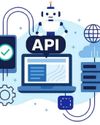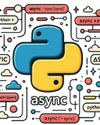Smooth Airport Exits Using Mobile Apps Powered by Generative AI

Shweta, a young businesswoman, went on a business trip to a new destination. As she stepped off the plane, she was greeted by the bustling energy of the airport. The airport stood before her like a miniature city, its vastness and diversity posing a unique challenge as she navigated her way through the arrival and exit processes. The foreignness of it all felt overwhelming, and she realised that each airport had its own distinct features.
Shweta scanned the terminal for directions to immigration, baggage claim, and eventually the exit. The airport, like a complex puzzle, presented an array of information to absorb. As she attempted to make sense of the signs and symbols guiding her, Shweta couldn’t help but yearn for a more seamless way to connect this influx of information to the real world.
She also faced the issue of identifying restrooms. The signage for restrooms varied across different airports, and the lack of clear and standardised indicators made it difficult for her to locate them.
As Shweta proceeded towards the immigration area, she encountered a significant delay due to the long queues. After clearing immigration, Shweta faced difficulties in finding her baggage carousel, which had been reallocated for the next landed flight. She wandered between the carousels and, finally, found her baggage in a corner.
As Shweta finally made her way out of the airport, she almost felt a sense of accomplishment at having overcome all the frustrations.
The above is one air passenger’s exit experience. Even though a few hi-profile passengers use airport navigation apps, they still face difficulties such as loading different apps for each airport. So, what is the solution?
Denne historien er fra August 2023-utgaven av Open Source For You.
Start din 7-dagers gratis prøveperiode på Magzter GOLD for å få tilgang til tusenvis av utvalgte premiumhistorier og 9500+ magasiner og aviser.
Allerede abonnent ? Logg på
Denne historien er fra August 2023-utgaven av Open Source For You.
Start din 7-dagers gratis prøveperiode på Magzter GOLD for å få tilgang til tusenvis av utvalgte premiumhistorier og 9500+ magasiner og aviser.
Allerede abonnent? Logg på

The Importance of Explainable AI in the Era of Agentic Systems
Explainable AI (XAI) makes AI systems transparent, explainable, and credible. It ensures users understand why a given model arrived at a specific decision so that it is easier to verify, debug, and trust the system. Let's look at all that XAI entails followed by a real-world example of how it works.

Python 3: Features Every Developer Should Know Of
Here's a review of some of the most significant features and enhancements introduced in Python 3, responsible for making it the programming language that developers love to work with.

Monitor the Health of Your System with New Relic
Learn how New Relic can be effectively used to monitor Dockerized applications in a production environment. Walk through a step-bystep integration, which explains key monitoring metrics and demonstrates how organisations can leverage New Relic's alerting, logging, and visualisation capabilities to maintain optimal system performance.

Optimising IT with Open Source: A Guide to Asset Management Solutions
A Guide to Asset Management Solutions
Understanding Bag-of-Words and corpora. Dictionary in Python
Discover how the Bag-of-Words model can be applied and visualised in a Python project.

The Best Open Source AI Projects for Beginners
Here's a list of the top open source AI projects for beginners, along with practical hands-on implementations and real-life applications that can be built using these tools.

The Right Ways to Address Cross-Site Request Forgery
Here’s an overview of the key concepts, impact and effective mitigation strategies of cross-site request forgery, also known as CSRF.

Al-Powered API Testing: Revolutionising Software Quality Assurance
Al-powered API testing is reshaping the landscape of software quality assurance. By automating and optimising testing processes, organisations can enhance the reliability and performance of their APIs, ultimately leading to better user experiences.

Why Python Developers Should Care About Asynchronous Programming
Explore what asynchronous programming is, when it should be used, how Python supports it, and measure its performance as compared to synchronous programming.

Linux Foundation and OpenSSF unveil Cybersecurity Skills Framework
The Linux Foundation, in collaboration with the Open Source Security Foundation (OpenSSF) and Linux Foundation Education, has released the Cybersecurity Skills Framework—a global reference designed to help organisations identify and strengthen key cybersecurity competencies across a broad range of IT roles, not just among cybersecurity specialists.
